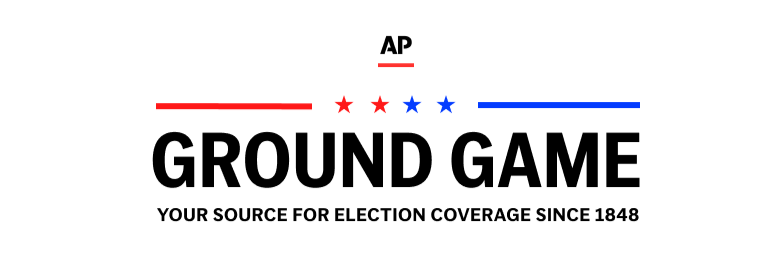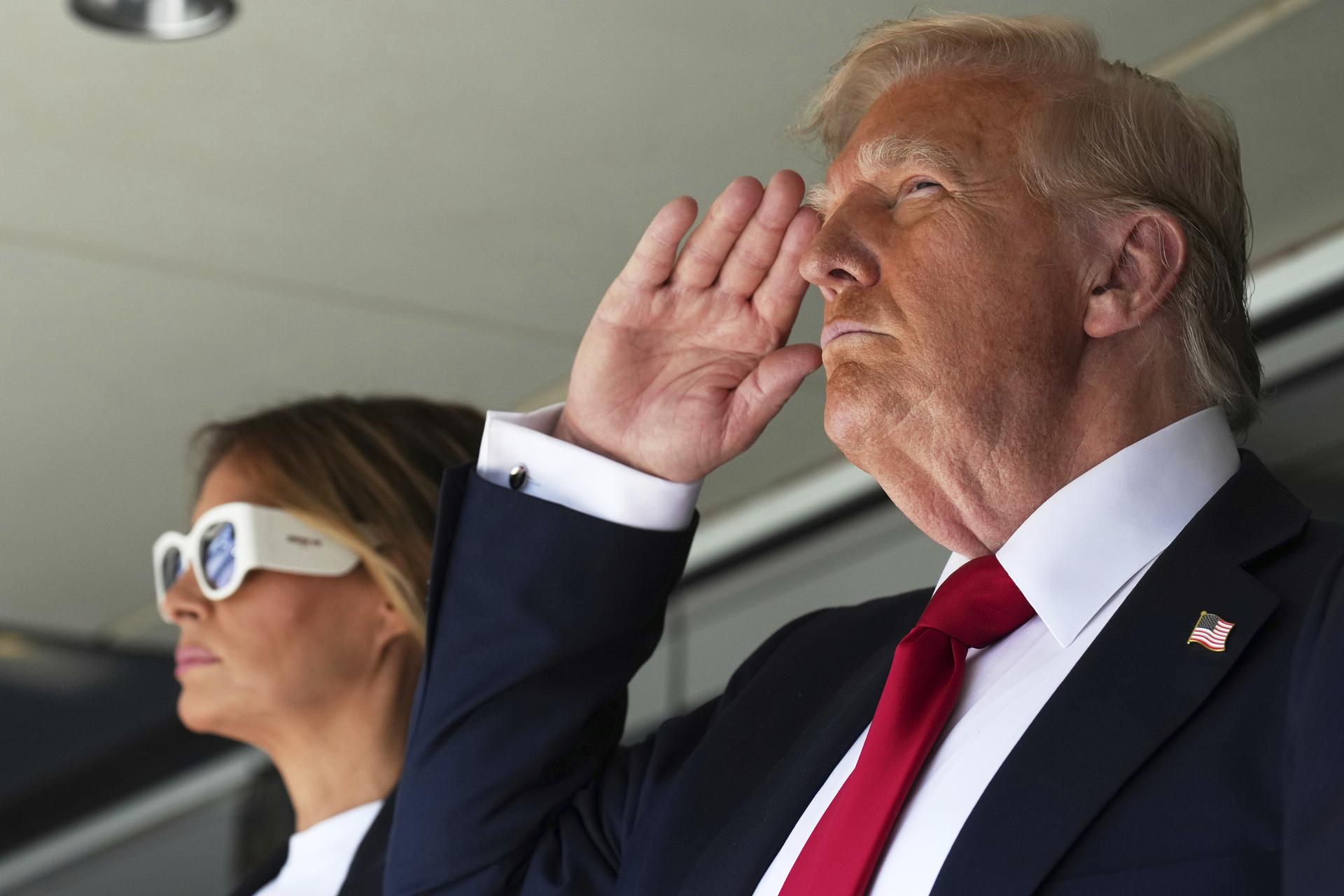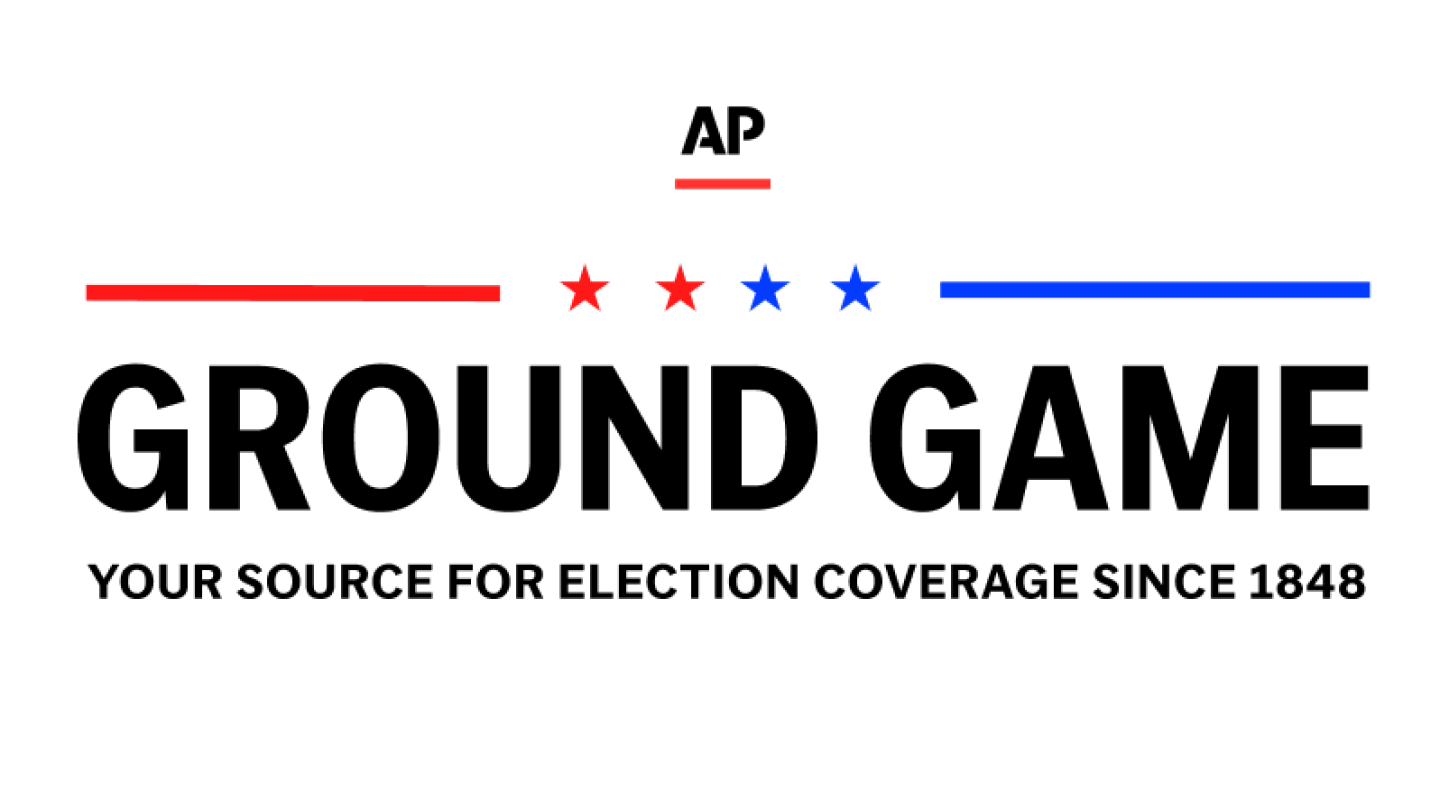

July 14, 2025 08:02:11 AM
July 14, 2025 08:02:11 AM
Senate Republicans test the popularity of DOGE spending cuts this week by aiming to pass President Donald Trump’s request to claw back $9.4 billion in public media and foreign aid spending. Democrats are trying to kill the measure but need a few Republicans uncomfortable with the president’s effort to join them.
Welcome to this week’s edition of AP Ground Game.
Policy changes, but facts endure. AP delivers accurate, fact-based journalism to keep the world informed in every administration. Support independent reporting today. Donate.

President Donald Trump salutes alongside first lady Melania Trump as they attend the Club World Cup final soccer match, at MetLife Stadium in East Rutherford, N.J., Sunday. (AP Photo/Jacquelyn Martin)
Senate vote tests the popularity of DOGE spending cuts
The Trump administration is employing a rarely used tool that allows the president to transmit a request to cancel previously approved funding authority. The request triggers a 45-day clock – which expires Friday – in which the funds are frozen. If Congress fails to act within that period, then the spending stands.
The House has already approved Trump’s request on a mostly party-line vote, and the Senate has little time to spare to beat the deadline for the president’s signature. Another House vote will be needed if senators amend the legislation, adding more uncertainty to the outcome.
Among things on the chopping block is nearly $1.1 billion from the Corporation for Public Broadcasting, which Trump has asked lawmakers to rescind. The White House says the public media system is politically biased and an unnecessary expense. The potential fallout from the cuts for local public media stations has generated concerns on both sides of the political aisle.
Trump has also asked lawmakers to rescind about $8.3 billion in foreign aid programs that aim to fight famine and disease and promote global stability. Among the targets is $900 million to combat HIV/AIDS, malaria and other diseases and strengthen detection systems to prevent wider epidemics, as well as $4.15 billion for two programs designed to boost the economies and democratic institutions in developing and strategically important countries. Read more.
Of note:
Trump issued a warning on his social media site directly aimed at individual Senate Republicans who may be considering voting against the cuts, saying “Any Republican that votes to allow this monstrosity to continue broadcasting will not have my support or Endorsement.”
Trump to meet NATO leader Rutte after Ukraine weapons sales
NATO Secretary General Mark Rutte is set to meet with Trump this week on the heels of the U.S. leader announcing plans to sell NATO allies weaponry that they can then pass on to Ukraine. Rutte also plans to hold talks with Secretary of State Marco Rubio and Defense Secretary Pete Hegseth, as well as members of Congress.
A top Trump ally, Republican Sen. Lindsey Graham of South Carolina, said Sunday that the conflict is nearing an inflection point as Trump shows growing interest in helping Ukraine fight back against Russia. It’s a cause that Trump, who during his campaign made quickly ending the war a top priority, had previously dismissed as being a waste of U.S. taxpayer money.
The Rutte visit comes after Trump last week teased that he would make a “major statement” on Russia on Monday, and as Ukraine struggles to repel massive and complex air assaults launched by Russian forces. Read more.
Of note:
Trump is also facing widespread calls to support Senate legislation that aims to cripple Russia’s oil industry and hit Moscow with U.S. sanctions for its ongoing invasion of Ukraine. The legislation – which in part calls for a 500% tariff on goods imported from countries that continue to buy Russian oil, gas, uranium and other exports – has overwhelming support in the Senate, but Trump made clear he wants full authority over the waiver process to lift the sanctions, tariffs or other penalties, without having to cede control to Congress.
Democrats already lining up for 2028 presidential race in early voting states
The first presidential primary votes won’t be cast for another two and a half years, but in an early-voting state like South Carolina, the 2028 campaign trail is already starting to feel crowded.
Over the span of 10 days in July, three Democratic presidential prospects – California Gov. Gavin Newsom, Kentucky Gov. Andy Beshear and California Rep. Ro Khanna – are scheduled to campaign in the state, and nearly half a dozen others have made recent pilgrimages there, as well as New Hampshire and Iowa — states that traditionally host the nation’s opening presidential nomination contests.
The voters in these states are used to seeing presidential contenders months or even years before most of the country, but the political jockeying in 2025 for the 2028 presidential contest appears to be playing out earlier, with more frequency and with less pretense than ever before. Read more.
Of note:
The unusually early jockeying is playing out as the Democratic Party struggles to repair its brand, rebuild its message and fill a leadership vacuum after losing the White House and both chambers of Congress in 2024. But with optimism, and no clear front-runner, some Democratic operatives believe upwards of 30 high-profile Democrats could ultimately enter the 2028 primary — more than the party’s overpacked 2020 field.
